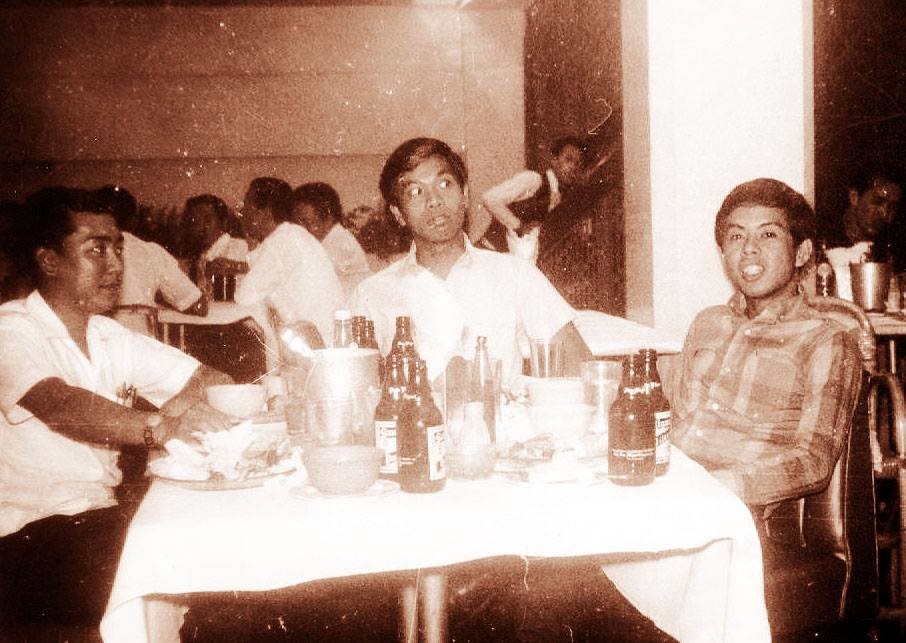‘He was one of the intellectual titans produced by the Philippines after Rizal’ – Gregorio F. Zaide.
Renato Perdon FOOTNOTES TO HISTORY – Filipinos, including some Australians, who follow con-temporary history of the Philippines could easily explain the meaning of the word, or was it an acronym – EDSA.
The acronym EDSA acquired its historical importance during the 1986 People Power Revolution that ended the more than two decades of the Marcos regime. And changed the course of Philippine history.
Our knowledge of EDSA ends there for most of us are not aware that EDSA means Epifanio de los Santos Avenue.
Who was he? Why was he honoured with a long stretch of thoroughfare that starts from Caloocan City, passing through Quezon City, San Juan City, Mandaluyong City, Makati City, and eventually Pasay City.
Was the avenue named after him because it was as long as his name? Poor Epifanio de los Santos for no one now calls the highway by his name. Every-body call it EDSA, even busses plying their route simply use the shortened name EDSA as their point of destination.
The light rail train line is now being called EDSA MRT. The name Epifanio de los Santos Avenue just disappeared from street maps and replaced by EDSA.
Epifanio de los Santos or Don Panyong for short was a multi-talented person and admire by many. He was one of the greatest Filipino scholars after Jose Rizal. He was a lawyer, a journalist, historian, philosopher, bibliophile, biographer, painter, poet, musician, literary critic, antique collector, and a librarian.
Don Panyong was born on 7 April 1871 to Escolastico de los Santos and Antonina Cristobal, both scions of well known families of Nueva Ecija and Bulacan. His parents were rich and educated.
EDSA as we refer to him now, went to the Ateneo de Manila where his father also studied years before him. After obtaining his degree of Bachelor of Arts from the Jesuit school, he moved to the Dominican University of Santo Tomas (UST) where he studied law.
It was at the UST that he started to show his fascination with literature and the arts. He initiated his collection of books on the subjects. Soon, his abode in Intramuros, Manila, was the meeting place for persons of similar interests such as Cecilio Apostol, Fernando Ma. Guerrero, Rafael Palma, Jose G. Abreau, Jaime C. De Veyra and Clemente J. Zulueta.
Every Thursday, the group would have an informal get-together at his place, mainly to exchange views of varied topics and read their own literary works. Don Panyong mastered the Spanish language and learned other languages such as Latin, Greek, and French. In 1898, he completed his law studies and graduated from the UST.
The war that broke out during that year inspired him to publish a patriotic news-paper in Malabon called La Libertad. It existed briefly. In fact, it had only one issue that came out on 19 June 1898. After this experience, he joined the editorial staff of another nationalist paper, La Independencia, edited and published by General Antonio Luna, brother of Juan Luna, the painter.
Joining the paper was like having a reunion for among the writers of the revolutionary paper were his friends, Palma, Apostol, Guerrero and Abreau. Don Panyong wrote under the pseudonym of G. Solon.
After the assassination of General Luna, Don Panyong became the district attorney for San Isidro, Nueva Ecija and a couple of years later, the provincial governor. In 1904, he was appointed member of the Philippine Commission which represented the Philippines in the St. Louis Exposition.
After the exposition, he travelled in France, England, Spain, Italy, Germany and other European countries. During this sojourn, he collected valuable books and materials on the Philippines. Two years later, he was appointed fiscal for both Bulacan and Bataan provinces but continue his love for Philippine history and literature.
His scholarship caught the attention of American Governor-General Francis Burton-Harrison who appointed him the technical director of the Philippine Census in 1918.
Don Panyong became the director of the Philippine Library and Museum in 1925. As a man of integrity and discipline, he ceased collecting for his personal collection and devoted his acquisition activities for the government. It was during his term as library director that the Philippine library collection expanded, some of them were purchased through legislation, an indication of the strong support Don Panyong had from the Filipino legislators.
Don Panyong married twice. His first wife was Ursula Paez of Malabon and the second was Margarita Torralba of Malolos, Bulacan. Only one of his off- springs became interested in history and was recognised as a good researcher. He was Jose P. Santos, his son by his first wife, who like him became a historical writer, biographer and collector of Filipiniana materials.
Don Panyong was a writer of note. His first published work was Algo de Prosa which was published in 1909 and almost yearly after, a publication or two would come out with his by-line. He was a consistent writer of biographies of Filipino nationalists and was credited for translating the Tagalog Florante at Laura of Francisco Balagtas to Spanish, now a classic in Philippine literature.
As a writer, he became a member of the renowned Royal Academy of Madrid for during this period, he had already created a reputation as outstanding writer and researcher of Philippine history, biography, literature and the arts.
EDSA died on 28 April 1928, only 57 years old and at the height of a distinguished career. After his death, Highway 54, now known as EDSA, was renamed Epifanio de los Santos Avenue to honour a man of letters, arts, history and many disciplines.
Today, it is sad to note that his name has disappeared from our memory but the acronym EDSA is here to stay. EDSA has acquired a different significance to Filipinos. It is now associated with another important historical event – the EDSA Revolution.










Leave a Reply